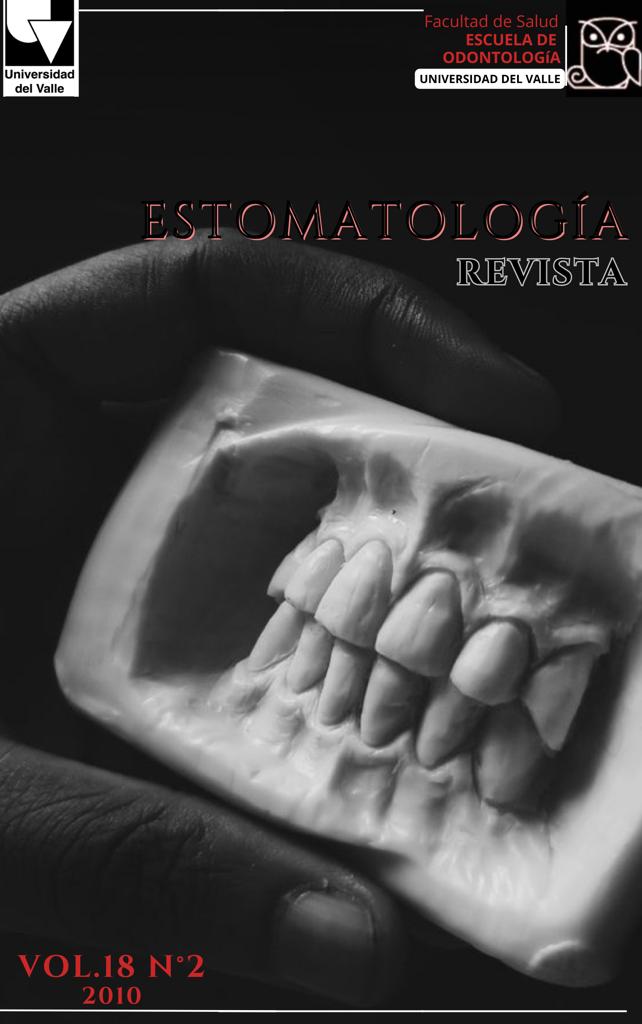Ophthalmologic examination in dental school students and its relationship with the use of dental curing light
Keywords:
Dental curing light, dentistry, biosafety, ophthalmologic examination, ocular damageMain Article Content
Objective: We determined the ophthalmic diagnostic of dental students at the University del Valle (Cali, Colombia), and compared the findings of ophthalmologic evaluation in a group of students previously exposed to the use of the curing light in clinical practice, and other group of students not exposed to it.
Methods: It was implemented a survey by interview to report possible diseases, accidents and variables related to ocular pathology, including the use of curing lamp. Additional to this, it was performed an electroretinography, a photograph of eye fundus and a complete ophthalmological examination to each student.
Results: It was not found a statistically significant association between injury and exposure to the lamp, but there was a trend towards a higher percentage of ninth-semester students who presented some kind of ocular pathology, compared with students coursing fifth semester.
Conclusion: It is important to continue promoting and increasing knowledge about biosafety standards in dental students, dentists, assistants and patients, and give continuity to interdisciplinary work like this, which worked in a complementary manner with ophthalmologists. Further studies are recommended in the same population, after a period longer than two years.
2. Visible light-cured composites and activating units. Council on Dental Materials, Instruments, and Equipment. J Am Dent Assoc 1985; 110(1):100-102.
3. Arias Montoya LA. Efectos lesivos potenciales de la luz de polimerización sobre el órgano de la visión. Rev Fac Odontol Univ Antioq 1993; 4(2):31-37.
4. Siu TL, Morley JW, Coroneo MT. Toxicology of the retina: advances in understanding the defence mechanisms and pathogenesis of drug- and light-induced retinopathy. Clin Experiment Ophthalmol 2008; 36(2):176-185.
5. Mendicute J. Lentes intraoculares amarillas: filtrando la luz azul. Arch Soc Esp Oftalmol [revista en la Internet]. 2004 Sep [citado 2010 Nov 27]; 79(9): 417-420. Disponible en: http://scielo.isciii.es/scielo.php?script=sci_arttext&pid=S0365-66912004000900001&lng=es.doi:10.4321/S0365-66912004000900001.
6. República de Colombia. Ministerio de la Protección Social. Resolución 8430 de 1993.
7. Català Mora J, Castany Aregall M. Pruebas Electrofisiológicas: ¿Qué, cómo, cuando y por qué? Annals d’ Oftalmología 2005; 13(1): 8-29.
8. Guyton A. Tratado de Fisiología Médica. México: Editorial Mc Graw Hill; 1986. p 712-714.
9. Zigman S. Ocular light damage. Photochem Photobiol. 1993; 57(6):1060-8.
10. Satrom KD, Morris MA, Crigger LP. Potential retinal hazards of visible-light photopolymerization units. J Dent Res 1987; 66(3):731-736.
Downloads
Los autores/as conservan los derechos de autor y ceden a la revista el derecho de la primera publicación, con el trabajo registrado con la licencia de atribución de Creative Commons, que permite a terceros utilizar lo publicado siempre que mencionen la autoría del trabajo y a la primera publicación en esta revista.

